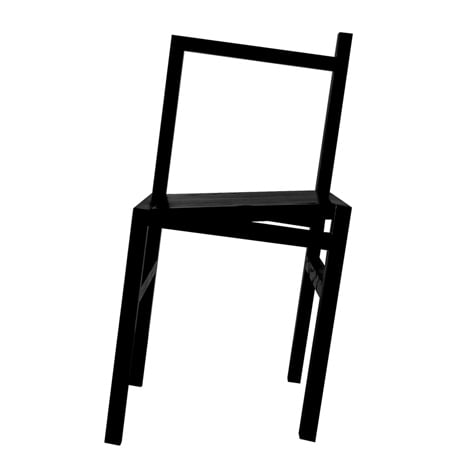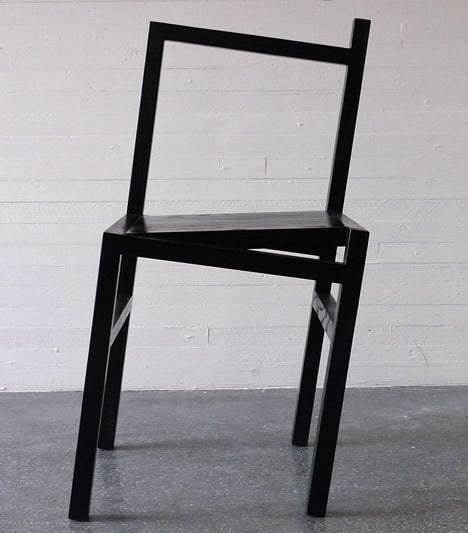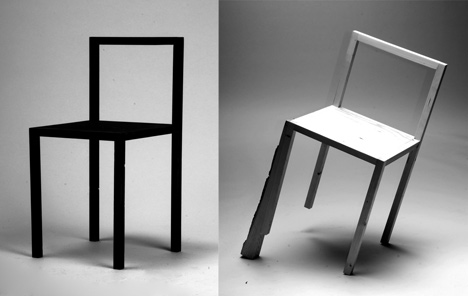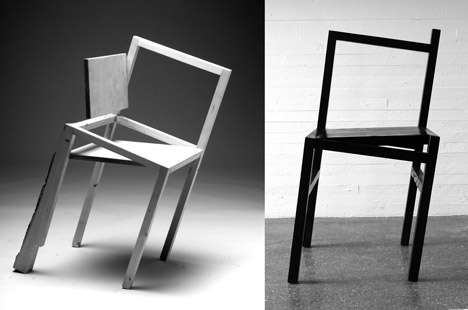9,5° chair by Rasmus B. Fex
The wonky look of this chair by Danish designer Rasmus B. Fex actually makes it stronger.

By tilting the legs and back by 9.5 degrees but keeping the seat straight, Fex removed the need for a stabilising rod underneath.

The chair was selected for use in the Knut Hamsun museum in Hamarøy, Norway, designed by Steven Holl.

We recently featured another design by Fex – an angular milking stool with interlocking legs.

See all our stories about chairs »
Here's some more information from the designer:
Behind this very simple piece of furniture art craft lies a long and complex process. The chair has drastically changed its characteristics several times along the way. 9,5° started out as an iconic chair. The icon was experimented on repeatedly to explore all aspects of something as simple as a chair, with the purpose of creating an entirely new chair. The ambition was to create an object in the borderland between art and design. Sculptural, yet functional.
The chair is tilted at 9,5 degrees. By tilting the chair and then elevating one end of the seat back to a straight angle, a triangle was created. This actually made the construction stronger and reduced the need for a stabilising cross rod. In conclusion, it's not always wrong to be wrong. The deconstruction of the original design served a higher purpose.
In 2009, the interior architects behind the Knut Hamsun museum in Hamarøy, designed by Steven Holl, saw the chair in the "Nyttrom" interior magazine and decided to acquire 9,5° as the museum chair. 9,5° is part of Art with Function – Design Without.
Art With Function - without design is a method developed by myself in an attempt to push my thinking outside the box. The tool forces the designer's thoughts along new paths and promotes a conceptual approach to the design craft. It is a different way to work process oriented. By removing functionality from design, designers are forced to think in a new way. The goal is to reach a new aesthetic in which objects are both art and design.
The process is divided into five acts.
Act 1: Choose an archetype, which fills a specific function.
Act 2: Make 10 copies of the archetype.
Act 3: Remove the object’s function in ten different ways.
Act 4: Add the old function to all the objects from ACT 3.
Act 5: Choose one object from Act 4 and make it into a finished product.